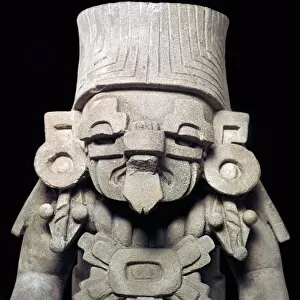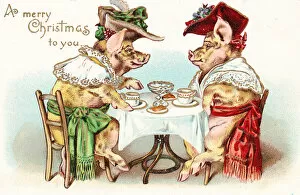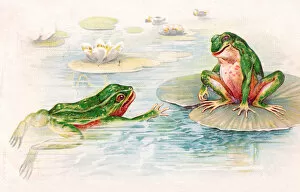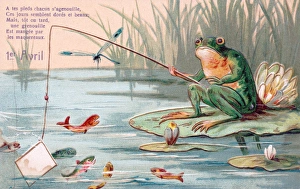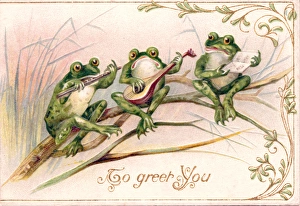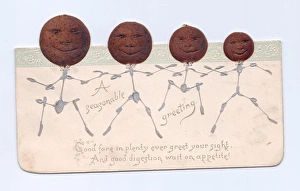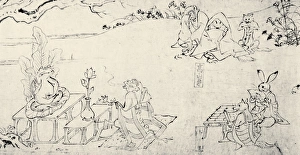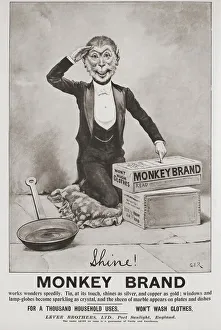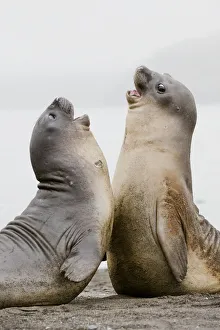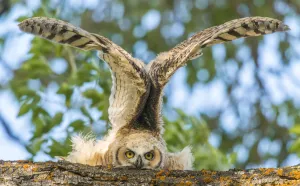Anthropomorphism Collection (page 28)
Anthropomorphism, the art of attributing human characteristics to non-human entities, has been a fascinating subject throughout history
All Professionally Made to Order for Quick Shipping
Anthropomorphism, the art of attributing human characteristics to non-human entities, has been a fascinating subject throughout history. Dating back to 1891, when A Select Committee first delved into this concept, it has captivated our imaginations and sparked creativity in various forms. Take for instance Henry Stacy Marks' creation - a whimsical Christmas card showcasing cats enjoying a lively party. The feline creatures seem almost human as they revel in the holiday spirit. Similarly, an alligator dressed up to meet you in Florida adds another layer of anthropomorphic charm. Even advertising cards have embraced this enchanting phenomenon. Thoms Castile Soap of Manchester cleverly depicts animals engaging in everyday activities like carrying food or ice skating on Christmas cards. These seemingly ordinary moments become extraordinary when we witness frogs gliding gracefully or owls diligently ringing bells. The magic continues with a Birthday Greetings postcard featuring a family of cats at home, celebrating just like humans do. And who can resist the adorable sight of six owl bellringers spreading joy during the festive season? But anthropomorphism doesn't stop there; it extends its reach even into poster advertisements. Pettijohns breakfast food is promoted through an image that showcases animals gathering around a table as if sharing a meal together - reminding us that these creatures possess relatable qualities too. In literature and art alike, anthropomorphism takes center stage. "Three Little Kittens" tells us tales where kittens behave much like mischievous children while Alice encounters the Dodo bird who exhibits human-like traits despite being part of the animal kingdom. Lastly, imagine encountering a turkey playing the role of a banker. This humorous portrayal exemplifies how they are inject humor and playfulness into unexpected scenarios. From Victorian times to modern-day interpretations, anthropomorphism remains an enduring fascination for artists and storytellers alike. It allows us to connect with nature's creatures on deeper levels by attributing human qualities to them.













